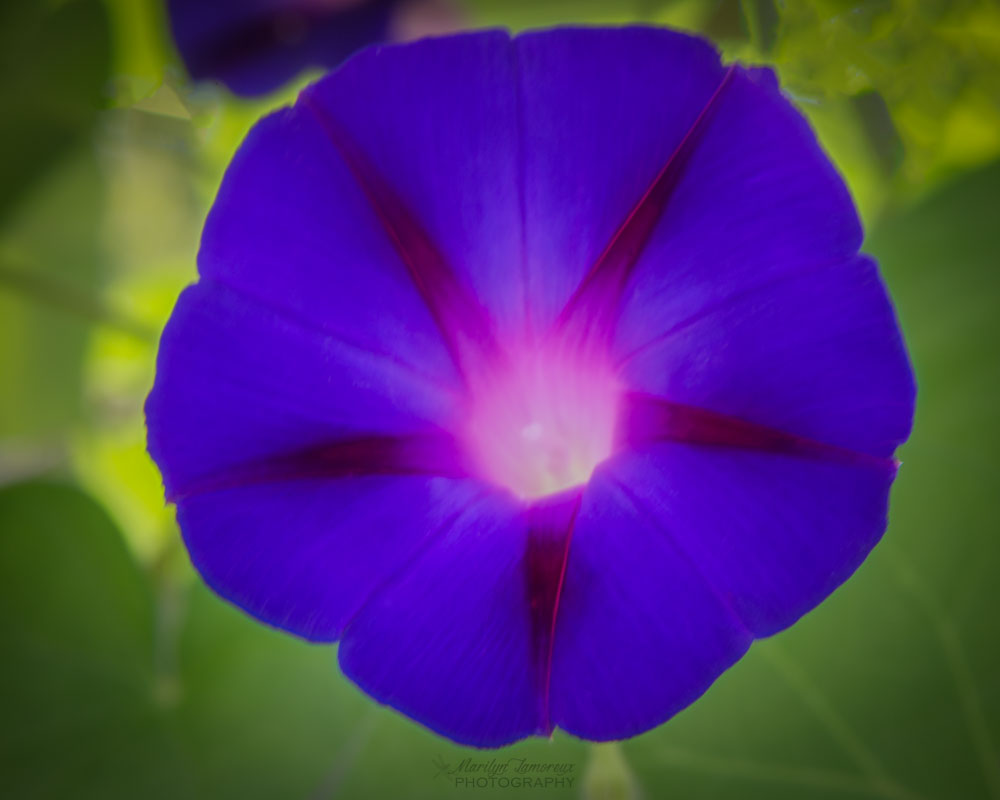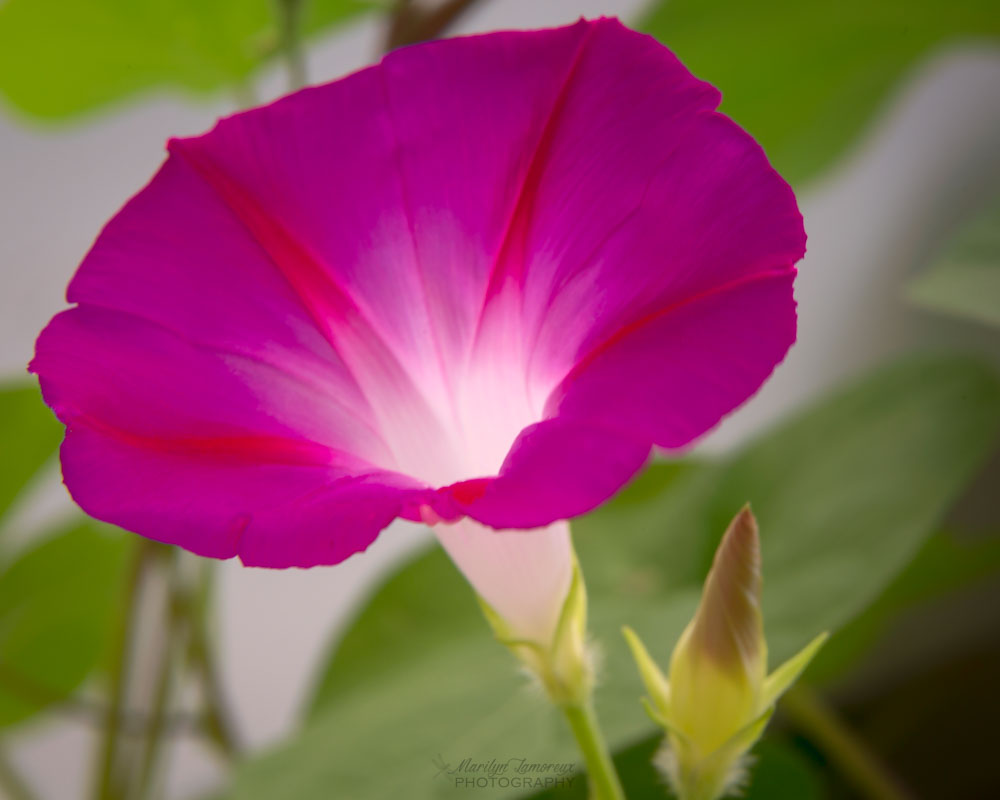The morning glory flower is such a common simple vining flower. Yet I find great joy in looking into the depths of these cup shaped flowers. To me, they often look like they are glowing from within.
Glory Hallelujah – It’s morning glory season
Sunday morning as I wandered through the paths at the Minnesota Landscape Arboretum with my camera I came upon one of my favorite spots at the Arboretum.
I love this gorgeous arbor and path. And I was even more delighted with it when I saw that there were morning glories climbing up several of the trellises.
Morning GloryIt is as if all sorrows vanish into the earthand re-bloom into flowers like this,an origami shape filled with sky.
For weeks, the small buds stayed shut,spiraling ovals on a waxy vinethat laced the stems of the last sunflowers.
I thought the first frost would darken it,tighten it to coils of thin black wire,
but then, this morning, the blossom’s open dress,blue silk that will wrinkle in hours,
yet for now, like a watercolor painted in the air,one luminous white star in its shining throat
— Joan McMillan
I love the dark blue wild ones and also the deep purple cultivated morning glories. Recently I saw pale pink morning glories growing wild at the edge of a marsh at French Regional Park.
Morning glory flowers open in the morning and wilt by afternoon or nightfall, making the flower a symbol of the fleeting nature of life or sometimes of the fleeting nature of love. I find these beautiful flowers all the more compelling because of their short blazing beauty. Their petals are so fragile yet often so brilliantly colored.
May you walk in beauty.







0 Comments